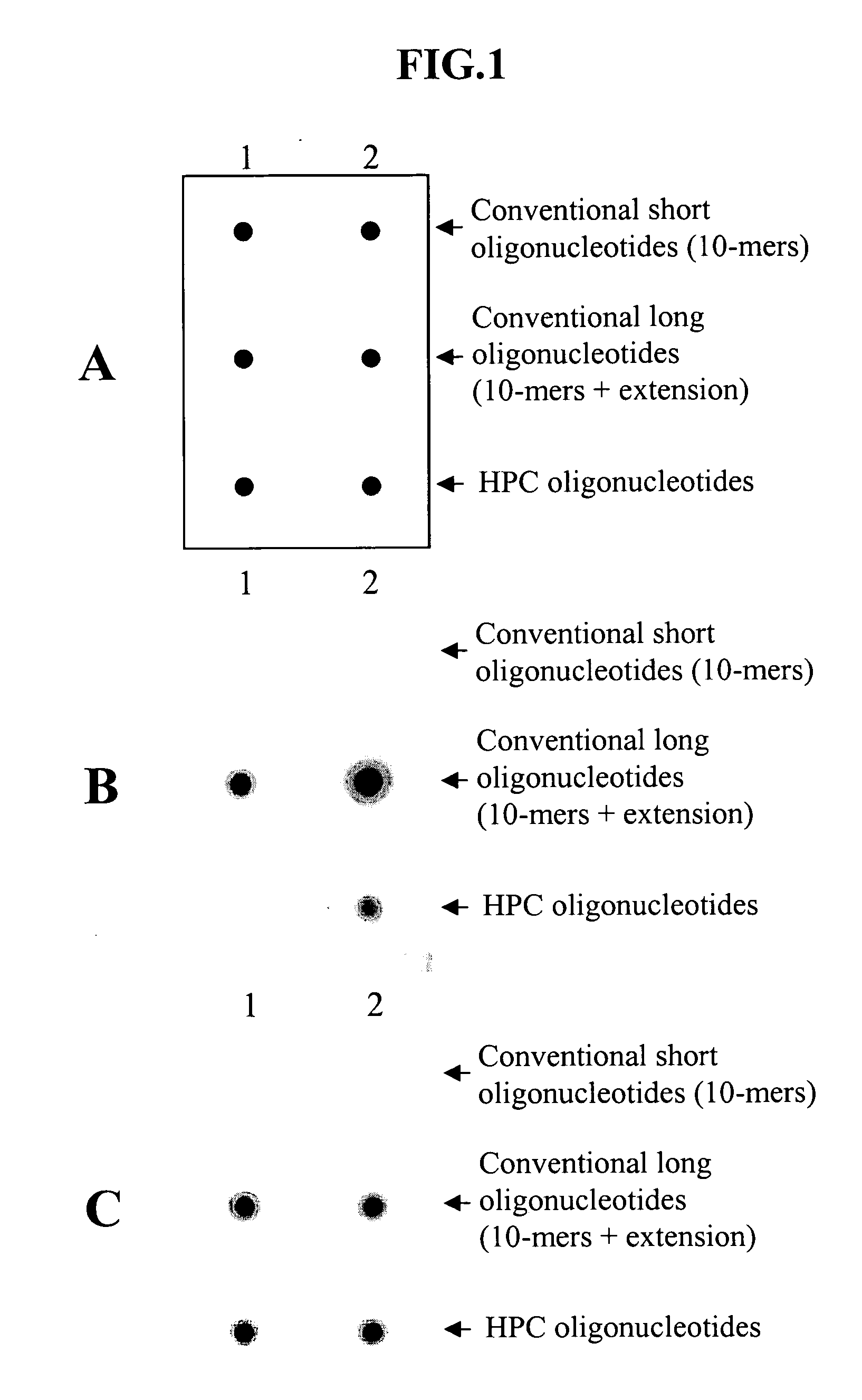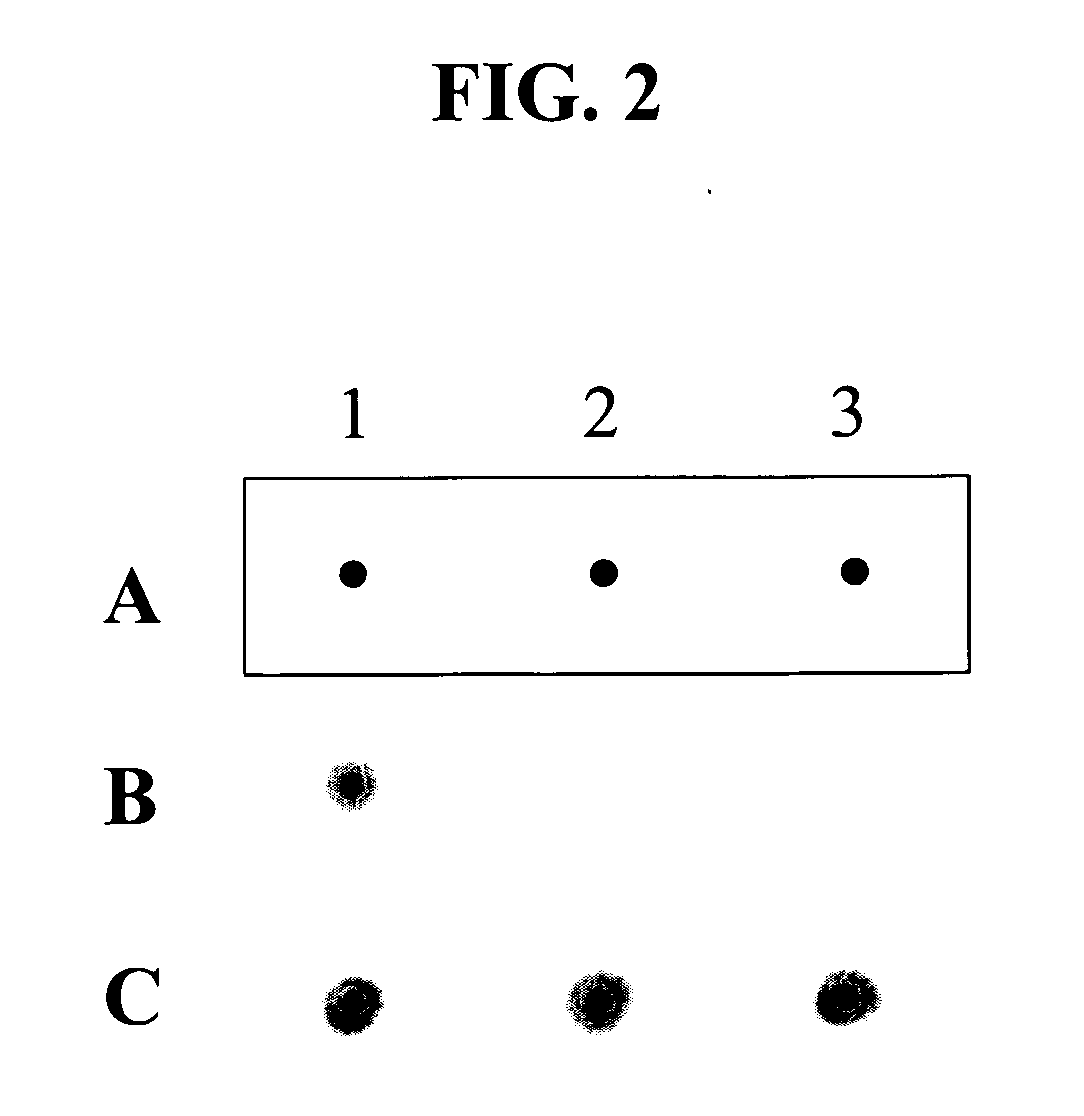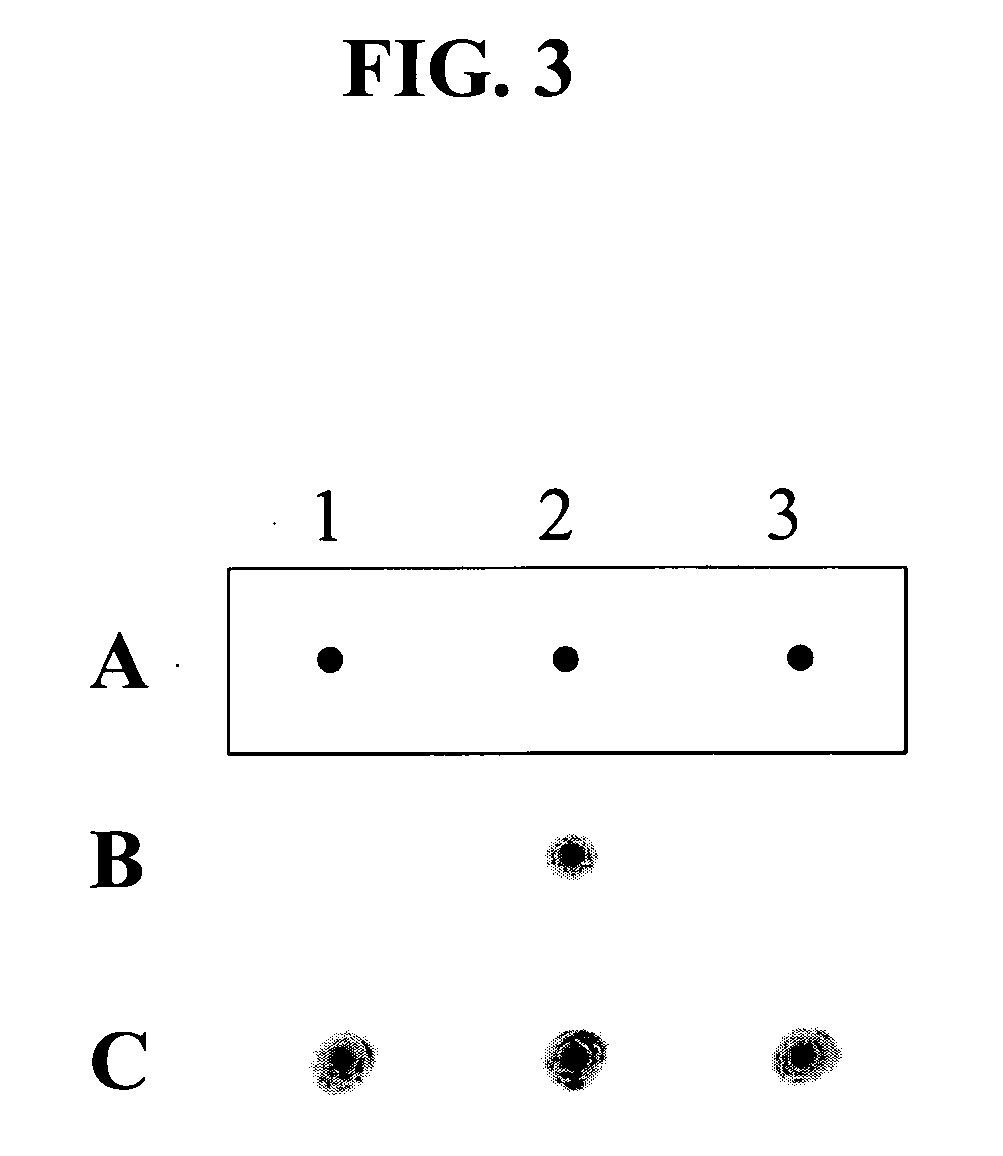Hybridization portion control oligonucleotide and its uses
a technology of oligonucleotide and hybridization, applied in the field of nucleic acid hybridization, can solve the problems of non-specificity of oligonucleotide, limitations, and affecting negative data, and achieve the effect of high specificity
- Summary
- Abstract
- Description
- Claims
- Application Information
AI Technical Summary
Benefits of technology
Problems solved by technology
Method used
Image
Examples
example 1
Effect of Universal Base Residues in HPC Oligonucleotide on Hybridization Specificity
[0077] The effect of universal base residues such as deoxyinosines positioned between the 3′- and 5′-end portions of HPC oligonucleotide was evaluated by SNP genotyping analysis using three different types of oligonucleotides each having allele-specific 10-mers, including conventional short and long oligonucleotides and HPC oligonucleotide.
[0078] A. Synthesis of Oligonucleotides
[0079] Oligonucleotides used in the Example 1 having sequences shown in Table 1 were synthesized by means of a DNA synthesizer (Expedite 8900 Nucleic Acid Synthesis System, Applied Biosystems (ABI)) according to a standard protocol. In the HPC oligonucleotides, deoxyinosine was incorporated using deoxyinosine CE phosphoramidite (ABI). The oligonucleotides were purified by means of an OPC cartridge (ABI), and their concentrations were determined by UV spectrophotometry at 260 nm. In the HPC oligonucleotides described below,...
example 2
SNP Genotyping Using HPC Oligonucleotides
[0102] In order to demonstrate the application of HPC oligonucleotides to single nucleotide polymorphism genotyping, HPC oligonucleotides have been applied for a single nucleotide polymorphism (SNP) of human p53 (TP53) gene.
[0103] The allele-specific HPC oligonucleotides for detecting a SNP in exon 4 of the TP53 gene are as follows:
P53N1A-HPC5′-GTCTACCAGGCATTCGCTTCATIIIIICCCCGCGTGG-3′,(SEQ ID NO: 11)P53N1B-HPC5′-GTCTACCAGGCATTCGCTTCATIIIIICCCCCCGTGG-3′,(SEQ ID NO: 12)P53N2A-HPC5′-GTCTACCAGGCATTCGCTTCATIIIIITCCCCGCGTG-3′,(SEQ ID NO: 13)P53N2B-HPC5′-GTCTACCAGGCATTCGCTTCATIIIIITCCCCCCGTG-3′,(SEQ ID NO: 14)P53N3A-HPC5′-GTCTACCAGGCATTCGCTTCATIIIIICTCCCCGCGT-3′,(SEQ ID NO: 15)P53N3B-HPC5′-GTCTACCAGGCATTCGCTTCATIIIIICTCCCCCCGT-3′,(SEQ ID NO: 16)P53N4A-HPC5′-GTCTACCAGGCATTCGCTTCATIIIIIGCTCCCCGCG-3′,(SEQ ID NO: 17)P53N4B-HPC5′-GTCTACCAGGCATTCGCTTCATIIIIIGCTCCCCCCG-3′,(SEQ ID NO: 18)P53N5A-HPC5′-GTCTACCAGGCATTCGCTTCATIIIIIGCTCCCCG-3′,(SEQ ID NO: 19...
PUM
| Property | Measurement | Unit |
|---|---|---|
| volume | aaaaa | aaaaa |
| volume | aaaaa | aaaaa |
| structure | aaaaa | aaaaa |
Abstract
Description
Claims
Application Information
 Login to View More
Login to View More - R&D
- Intellectual Property
- Life Sciences
- Materials
- Tech Scout
- Unparalleled Data Quality
- Higher Quality Content
- 60% Fewer Hallucinations
Browse by: Latest US Patents, China's latest patents, Technical Efficacy Thesaurus, Application Domain, Technology Topic, Popular Technical Reports.
© 2025 PatSnap. All rights reserved.Legal|Privacy policy|Modern Slavery Act Transparency Statement|Sitemap|About US| Contact US: help@patsnap.com



